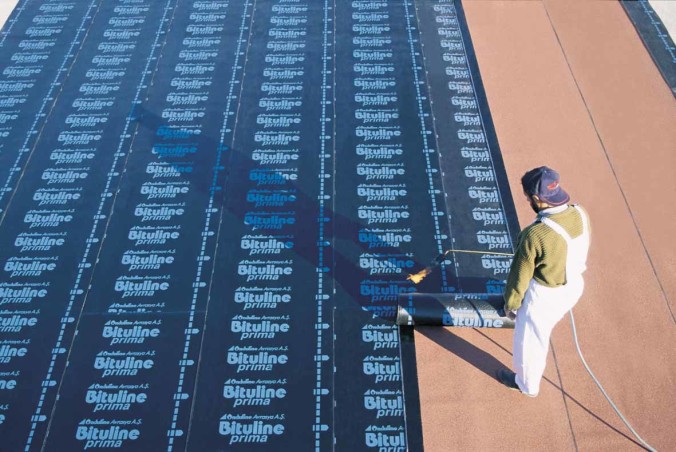
10 Aug Membrane Roofing
Membrane roofing is a type of roofing system for buildings and tanks. It is used on flat or nearly flat roofs to prevent leaks and move water off the roof. Membrane roofs are most commonly made from synthetic rubber, thermoplastic (PVC or similar material), or modified bitumen. Membrane roofs are most commonly used in commercial roofing, though they are becoming increasingly more common in residential roofing.
Synthetic Rubber (Thermoset) – This type of membrane roof is made of large, flat pieces of synthetic rubber or similar materials. These pieces are bonded together at the seams to form one continuous membrane.
Thermoplastic Membrane – This is similar to synthetic rubber, but the seams are typically heat-fused (welded) to form a continuous membrane. Seams in the materials are welded together with solvents or heat. The welds, when done properly, are as strong as the material.
Modified Bitumen – This type of roofing is an evolution of asphalt roofing. It is made from asphalt and a variety of rubber modifiers and solvents. There are several ways of connecting pieces of this material: heat application, hot-mopped application, cold application and self-adhesive application. These materials are often referred to as “torch-down” roofs because a large flame throwing torch melts the asphalt so that seams can be joined together.
Advantages Over Asphalt Flat Roofing Systems
These three application types of membrane roofing show distinct advantages over the previously more common flat roofing method of asphalt and gravel where it can be very difficult to create a proper seal at all seams and connection points. This can cause many roofs to leak early in its lifespan, and require much more maintenance. When installed correctly, newer materials are either seamless, or have seams as strong as the body. This eliminates much of the leakage concerns associated with flat roofing systems.
Repairs for asphalt and gravel roofs can be hard, mainly because it is difficult to locate the exact point of a leak. Newer systems can be patched relatively easily, and breaks and leaks are easier to locate. Originally asphalt roofing required a layer of gravel above it for two reasons. First, asphalt with direct exposure to sunlight degrades much faster, mainly due to the expansion and contraction throughout a day, and also the damage created by UV rays. Second, asphalt needs weight above to hold it down, because it sits on the top of a building, instead of being attached to it.
Each of the three newer types of membrane roofing systems contains materials that resist expansion and contraction, as well as reflect much of the UV rays. Also, because these membranes either lack seams or have strong seams, what expansion and contraction does occur does not create leaks and breaks at these seams. These newer roofing systems are also attached directly to the top of a building, which eliminates the need for excess weight above.





No Comments